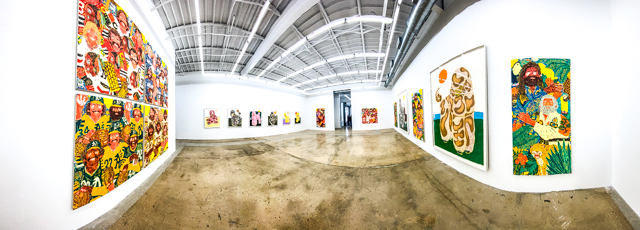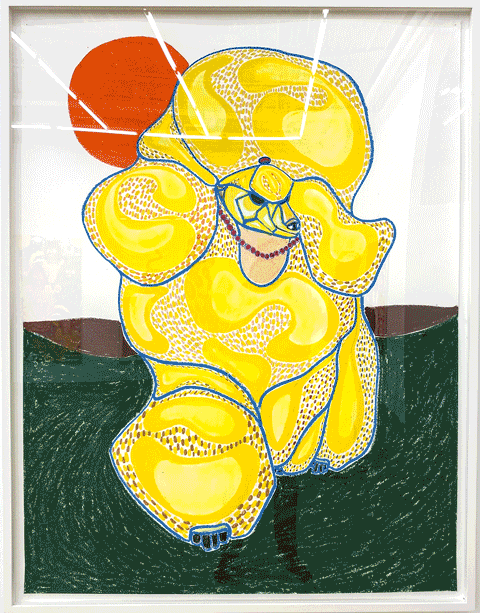BILL BRADY MIAMISUSUMU KAMIJOKOICHI SATO
January 18 – February 22, 2020Opening reception: January 18, 5-9 PM The gallery is pleased to present a two-person exhibition of paintings and works on paper by Japanese artists Susumu Kamijo and Koichi Sato. Susumu Kamijo (b. 1975) has always nurtured a special interest in the deconstruction of familiar subjects and their reconstruction through abstract forms. After working with human faces and different animals, the artist was drawn to poodles’ complex and recognizable appearance while walking his girlfriend’s poodle one day. By breaking the image into seemingly abstract forms, the artist started depicting these noticeable canines by portraying them against a generic landscape with a horizon and a sun-like circle. The seriousness of this format clashes with the subtle humor and oddness of the motif itself, which is further juxtaposed against his painterly technical approach. By using oil crayon and pastel on paper, Kamijo creates an uneven, dry and matte texture in his work, which evokes the quality of other classic artworks. Using a wide range of vibrant colors, vigorous dotted or linear patterns, these rich images change their intensity and appearance depending on the point of view.

Koichi Sato (b. 1974) is a self-taught New York City based artist originally born in Tokyo. Having grown up influenced by the abundance of images in television and sports, his paintings generally focus on the playful reinvention of these images in bold stylization, pattern, and color. He is fascinated with old American magazines, often using photos from these as primary influences for his intriguing and downright funny paintings. His portraits are works of positivity and happiness that shine a fresh and friendly perspective on images of people that one may be accustomed to overlooking. This sense of happiness made apparent in the comically stylized faces (often painted purposely square and disproportionate, with an intense grin) and exaggerated bodies is echoed in Sato’s celebratory use of color and pattern.T he patterns in the background of Sato’s group portraits help to flatten the portraits further, crowding the group to the foreground. The flatness echoes the flatness evoked in a photograph on a magazine page, his main source material.
[supsystic-gallery id=7]
